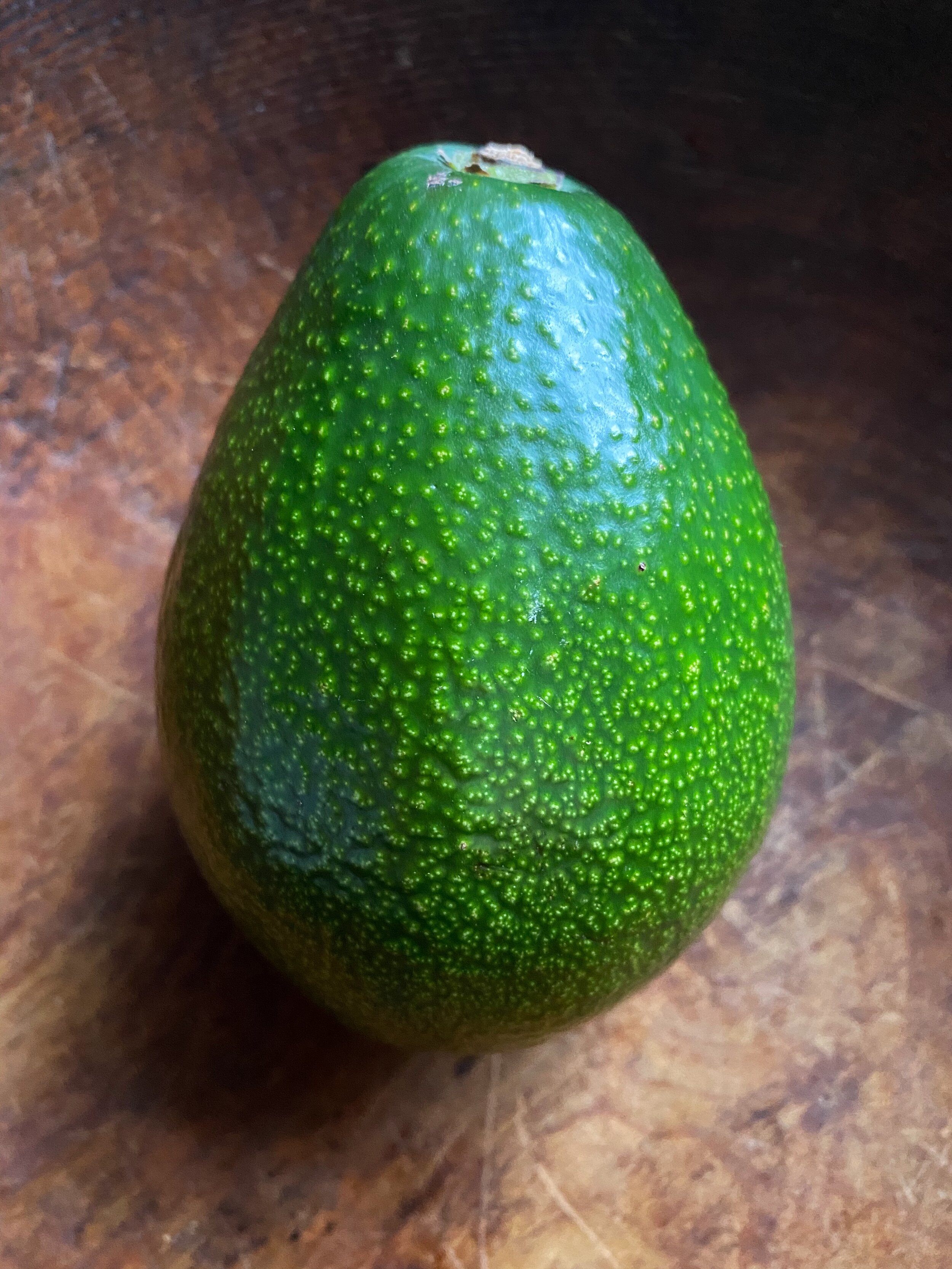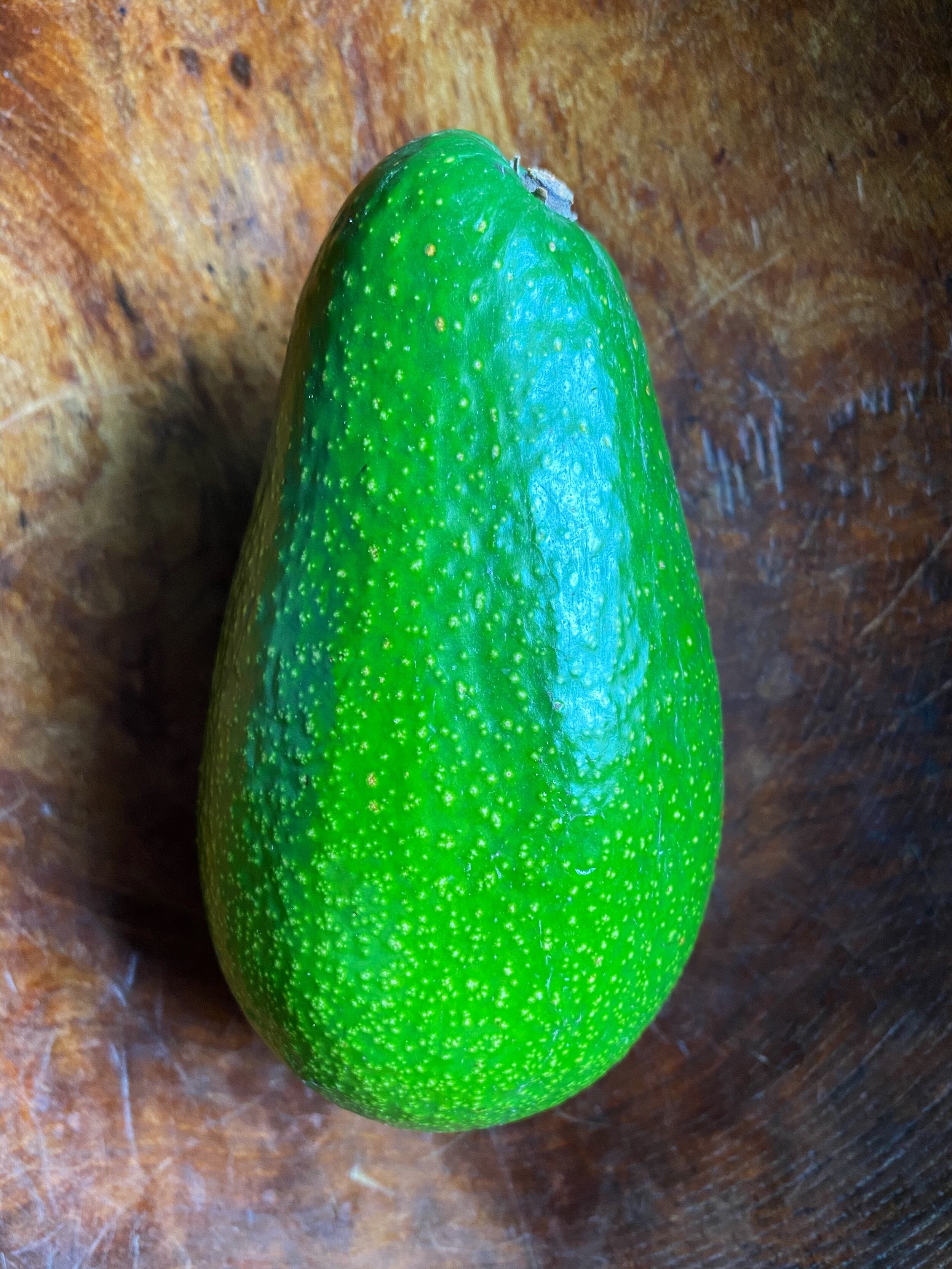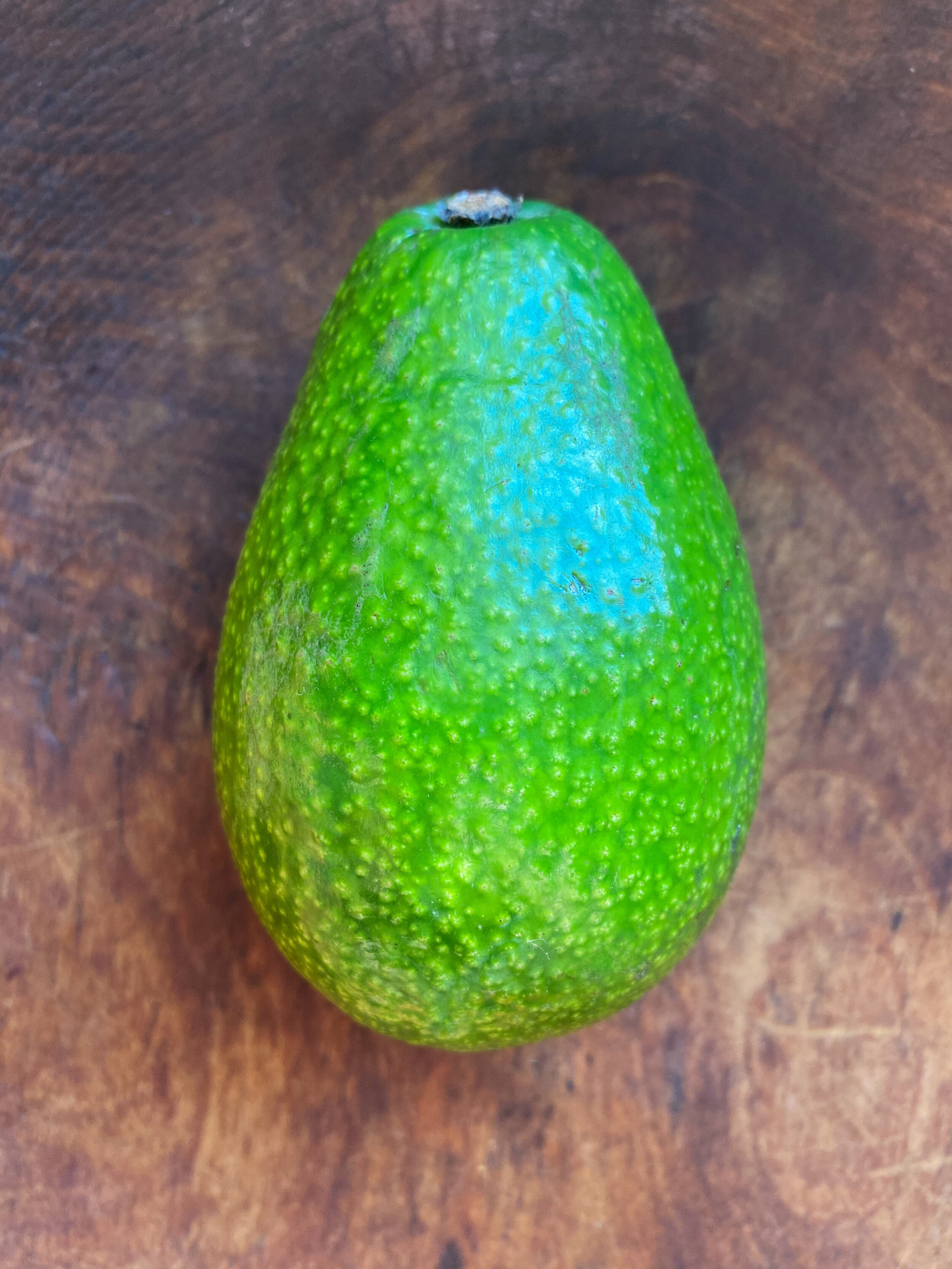The Fascinating World of Green Skin Avocados
exploring each variety is deliciously worthwhile
Winter brings several organic green skin avocado varieties out of California. While it’s easy for avocado-lovers allegiant to the more familiar dark-skinned Hass to dismiss these emerald beauties, they’d be smart to give them a chance! Not only do they present a range of delicious eating experiences from one variety to the next, but the science behind their use as pollinator trees in Hass groves and how they bear fruit is also fascinating.
Sometimes referred to as “pollinator varieties,” these avocado trees produce both male and female flowers that open and close at specific, opposing intervals. As a result, only male flowers on a tree will be open and offer pollen at any given point in a day while its female flowers are closed. This pattern seems counterintuitive to successful pollination. However, avocados are classified as ‘A-Type’ and ‘B-Type’ varieties, which provide complementary open and closed flower cycles. These contrasting pairs of trees create a symbiosis essential to successful cross-pollination. Throw in industrious insects responsible for ferrying pollen from an A-Type to a B-Type tree, or vice versa, and fruit is soon to follow.
While the popular Hass variety can be a self-pollinating tree, it is an A-Type variety and tends to have a much higher yield of fruit when planted interspersed with a B-Type variety. Fuerte, Zutano, Bacon, and Ettinger varieties are all B-Type, making them successful pairings with Hass trees. This reliance on a mix of varieties for a successful fruit-set means that green skin avocado production encourages biodiversity, something Mother Nature is always keen to reward.
Fuerte Avocado
Unlike Hass avocados, which can hang on the tree for months before being picked, green avocado varieties afford a much shorter window. While this presents challenges for harvesting, transporting and selling these types, for eaters that enjoy sampling numerous varieties, experiencing all of their unique and nuanced traits, these avocados are a joy to explore. It’s important to buy them right when they become available, for as soon as one variety has their few weeks in the spotlight, they’re over and making way for the next to have their time to shine.
Also, in contrast with Hass avocados, which give shoppers clues to ripeness as it’s skin turns from green to black, the color change in green skin avocados is significantly more subtle as they near peak readiness. Like a pear, eaters can best determine readiness by gently pressing their thumb into the stem-end to gauge firmness.
Historically, Fuerte avocados were the dominant variety in the U.S.A. Around the time the Hass market began offering retailers year-round availability out of California and Mexico, merchandisers in the U.S. started lumping all green skin varieties together under one name and marketing them as a singular green avocado. The result has been the fundamental miseducation of consumers who think that these avocados are lack-luster compared to dark-skinned varieties.
At OGC, we heartily support broadening consumer awareness around all avocados and believe there’s good reason to introduce shoppers to the unique and nuanced traits that green avocados possess. In addition to many other green skin varieties such as Reed and Pinkerton later in the year, we’re happy to carry Fuerte, Zutano, Ettinger and Bacon avocado this winter. We hope they find a spot in your display!
Bacon Avocado
Despite its name, Bacon avocados don’t taste like pork. Named after James E. Bacon, who first grew them in California, Bacon avocados boast a supremely buttery and smooth texture. Subtly sweet and mellow in flavor, its light yellow flesh is delicious on sandwiches and in salads and enhanced with a squeeze of lime and dash of salt.
Ettinger Avocado
Most recently developed, Ettingers are markedly pear-shaped with thin, smooth skin that clings to its flesh. Turning from pale green to a yellower hue as it matures, Ettinger’s flesh is mellow in flavor and lower in oil, making this variety ideal for eaters looking for a lighter, less dominant taste. Perfect for slicing, Ettinger’s texture holds up well against heat, so shoppers can look to this variety as the ideal choice for dropping into spicy soups or stews.
Fuerte Avocado
Fuerte’s smooth, shiny skin peels easily. Dense and rich, its pale green flesh boasts a hint of hazelnut and is considered by many to be the best tasting of all avocados. Less oily than other varieties, Fuerte is still rich in healthy fats and high in flavor! With limited supply from mid-January and into February, Fuerte is the most popular green skin avocado variety.
Zutano Avocado
As is the case with green skin avocados, the Zutano’s availability this season was here and gone before we knew it! This oval-shaped variety is easily recognizable by its smooth skin that’s more yellow than other varieties. Low in fat and subtle in flavor, Zutanos are great for calorie-conscious eaters who also want a plant-based way to add richness to their dishes! We look forward to offering Zutanos again next January!









